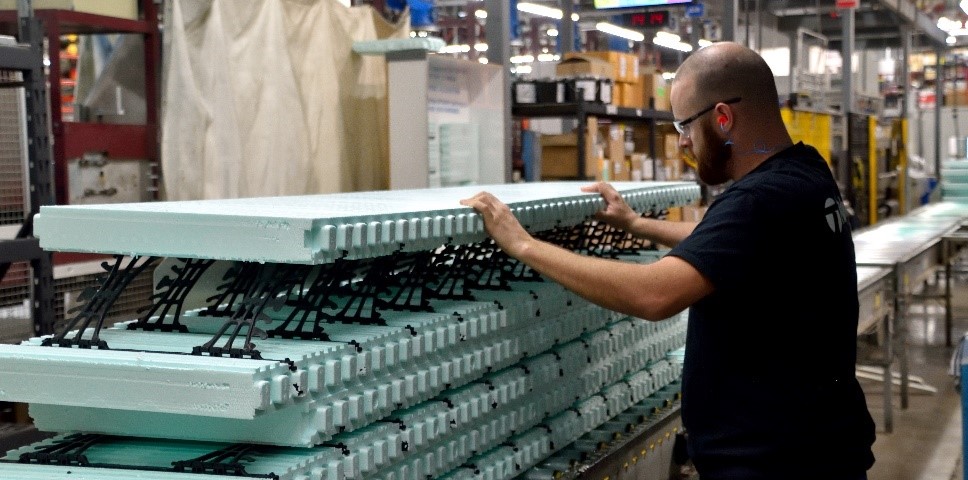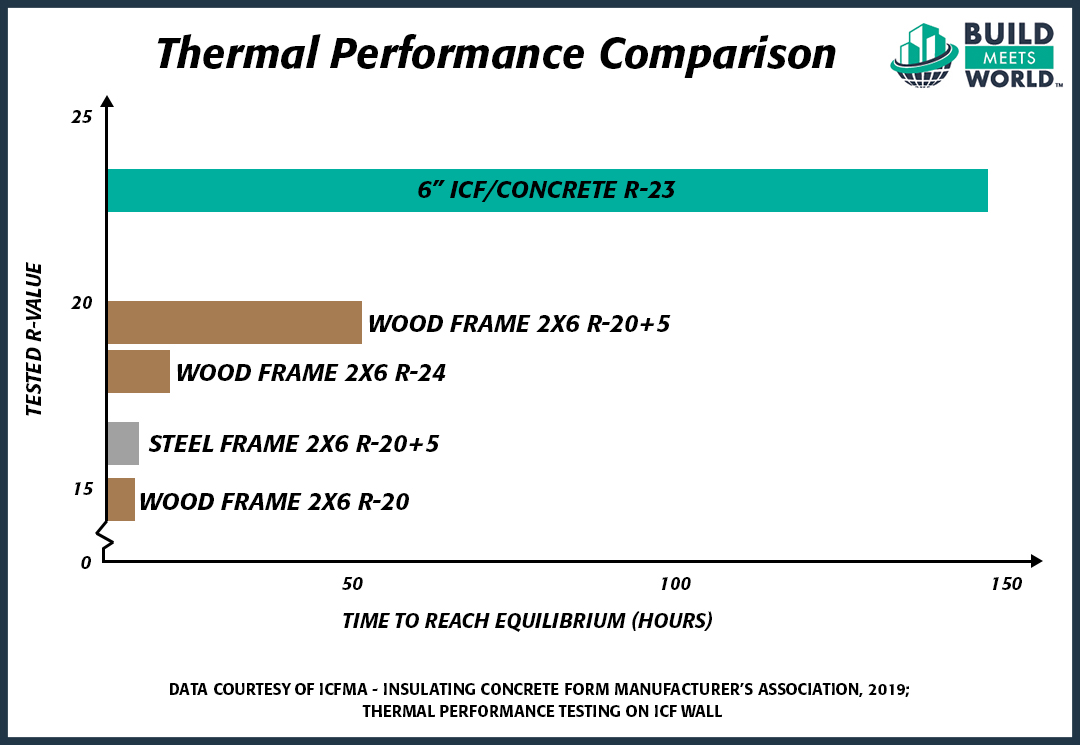
- Products
- Why Nudura
- Nudura Project Applications
- Training Academy
- Resources
- Company
If your goal is to be more sustainable and achieve net zero energy on your building, ICF construction minimizes thermal transfer that comes with using conventional framing methods. Many different building components, appliances, and operational practices factor into a structure’s energy conservation, but starting with ICF walls can significantly decrease your energy consumption from the onset of the project.
Insulated concrete forms (ICFs) are dual-sided panels of EPS foam connected by an inner web system, reinforced and are filled with concrete for a solid, monolithic core. Whether your aim is net-zero energy or carbon-neutrality, the unique design of ICF walls will help reduce energy consumption during construction and occupancy.
Kenny Stanfield, principal at Sherman Carter Barnhart Architects, who worked on the first net-zero public school in the United States said, “We simply changed the building envelope to insulated concrete forms… and saw some dramatic results in energy reduction.” Frequently used both commercially and residentially, ICFs have a substantial impact on a structure’s sustainability and long-term energy usage.

Here are the four ways that ICFs can help your project reach zero energy consumption:
- Decreased Waste
Nudura ICF forms have a collapsible design which saves space during transport, meaning you are not shipping air, which will reduce the number of shipments to the jobsite and lower freight costs. Each Nudura insulated concrete form is also reversible, which decreases the number of forms that are wasted during the building process.

- Labor Reduction
ICF technology has condensed the typical form system, wall structure, insulation, air barrier, vapor barrier interior/exterior finish anchorage processes into one ready-to-install form. Eliminating unnecessary steps during the building process reduces hours for workers on site so they can quickly move to the next job while still maintaining a high quality of craftsmanship. The reversible and lightweight features of Nudura insulated concrete forms also conserves unloading, transportation, and installation time, which is especially helpful given the current labor shortage in the construction industry.
- Time Savings
With the reduction of sub-trades needed with ICF construction comes additional time savings. ICF forms can be stacked in virtually any weather condition, which decreases downtime for the crew and enables year-round installation. By streamlining the building envelope process, subsequent trades, including exterior cladding and interior work, can proceed sooner, decreasing the overall timeline of the structure. Tenants can occupy the structure sooner meaning a quicker return on investment for the owner. - Superior Insulation for Energy Conservation
Thermal performance testing comparing ICFs to wood- and steel-framing showed that ICF structures maintain its interior temperature far longer than the other construction methods. When heating and cooling was turned off, an R-23 ICF wall took 125 hours to reach an interior temperature that was equal to the exterior temperature. In comparison, the wood-frame wall only lasted 50 hours and the R-20 steel-frame lasted an even shorter amount of time. ICFs minimize usage of the structure’s heating and cooling systems, which reduces their carbon and energy usage.


Brian Baungartle, a principal engineer at CMTA Energy Solutions, noted similarly that well-insulated building envelopes, especially those constructed with ICFs, result in less usage of the structure's HVAC systems.
If your net-zero property also wants amenities, ICF swimming pools are a great addition. Pools lose 80% of their heat through the sides and bottoms, so incorporating ICFs into the design would reduce the energy and money spent to control the pool’s water temperature.
How ICFs Build Net-Zero and Beyond: Howland Green Homes
Howland Green Homes used Nudura ICFs to construct not just a net-zero building, but the first net-positive office building in Canada. The Howland Green Business Centre is a commercial structure that will produce more energy than it consumes.
“ICF provides us with a great tool to achieve thermal resistance…We expect to almost completely reduce any thermal transfer whatsoever,” said Dave de Sylva Eng., President of Howland Green Homes. The combination of ICFs with other clean energy practices used in the building put them on the path to net-positive energy status.
Conclusion
Reaching net-zero energy on your next build is entirely possible when utilizing energy efficient ICFs. The ICF wall system allows you to decrease unnecessary waste, labor, time and energy that will get you closer to achieving your net-zero or carbon neutral energy goal.
CONTACT US
We’re committed to supporting homeowners and design professionals who are interested in or use our products. We’re always happy to help and provide more information.




